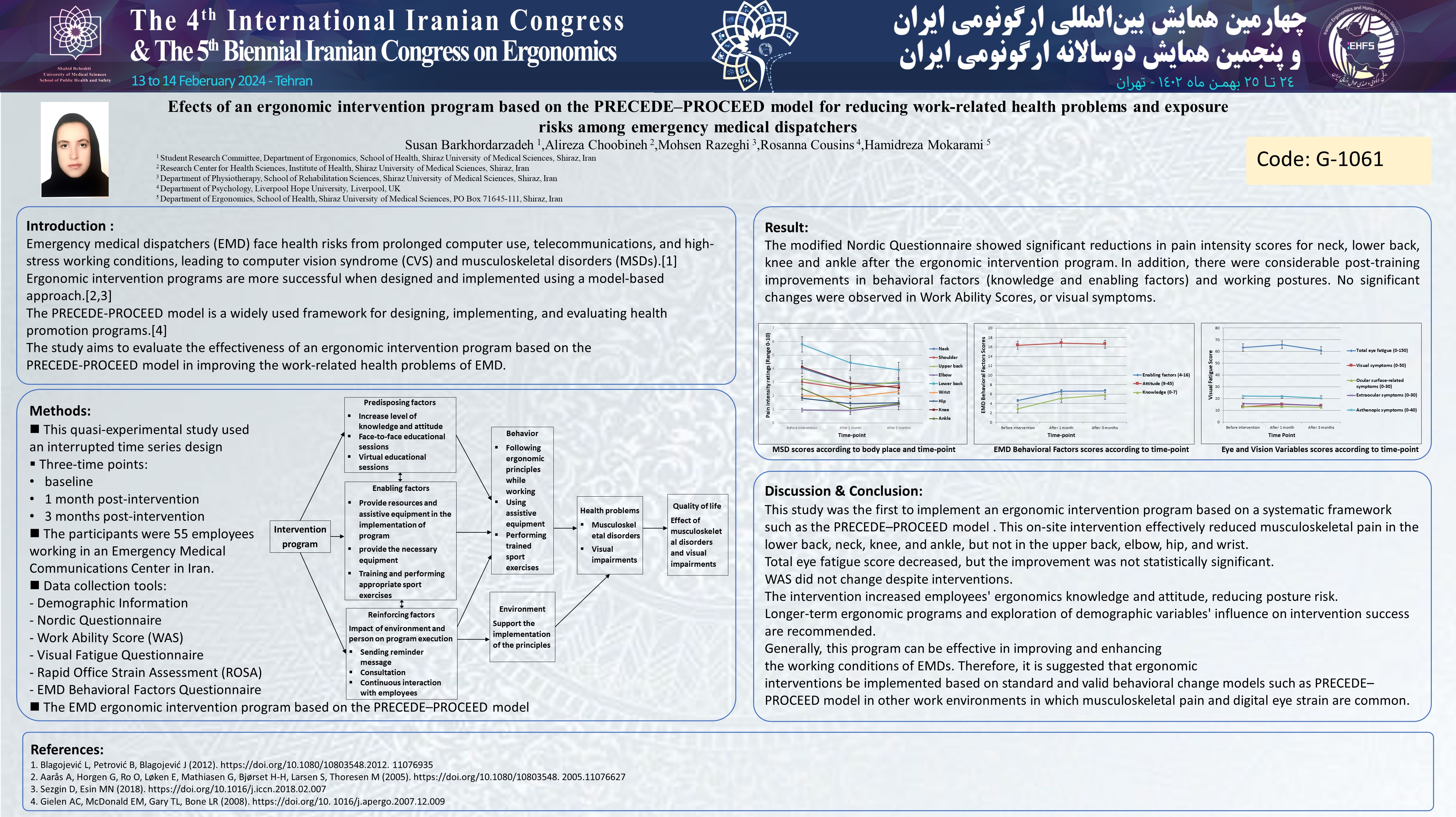Effects of an ergonomic intervention program based on the PRECEDE–PROCEED model for reducing work‐related health problems and exposure risks among emergency medical dispatchers
Code: G-1061
Authors: Susan Barkhordarzadeh © ℗, Alireza Choobineh, Mohsen Razeghi, Rosanna Cousins, Hamidreza Mokarami
Schedule: Not Scheduled!
Download: Download Poster
Abstract:
Introduction
Objective To evaluate the effectiveness of an ergonomic intervention program based on the PRECEDE–PROCEED model in terms of improving exposure risks and work-related health problems in emergency medical dispatchers.
Methods and Materials / Case Report
Methods This quasi-experimental study used an interrupted time series design. Participants were 55 employees working in an Emergency Medical Communications Center in Iran. The intervention program was based on the PRECEDE–PROCEED model and included five face-to-face training sessions and installing auxiliary equipment according to best ergonomic prin- ciples. Direct observations of the emergency medical dispatchers’ working postures using the Rapid Office Strain Assess- ment and a survey which included a modified Nordic Questionnaire, Work Ability Score, Visual Fatigue Questionnaire, and a Behavioral Factors Questionnaire were used at three time points: baseline, 1 month post-intervention, and 3 months post-intervention.
Results
Results The modified Nordic Questionnaire showed significant reductions in pain intensity scores for neck, lower back, knee and ankle after the ergonomic intervention program. In addition, there were considerable post-training improvements in behavioral factors (knowledge and enabling factors) and working postures. No significant changes were observed in Work Ability Scores, or visual symptoms.
Conclusion
Conclusions An ergonomic intervention program based on a systematic framework such as the PRECEDE–PROCEED model and on-site interventions can be effective in improving and enhancing the working conditions of emergency medical dispatchers. Therefore, it is suggested that ergonomic interventions be implemented based on standard and valid behavioral change models such as PRECEDE–PROCEED model in other work environments in which musculoskeletal pain and digital eye strain are common.
Key Words
Keywords Computer vision syndrome (CVS) · Musculoskeletal disorders (MSDs) · Eye fatigue · Ergonomic risk assessment · Behavioral change models
Comments (0)
Post a comment
Post comment is closed by admin.
